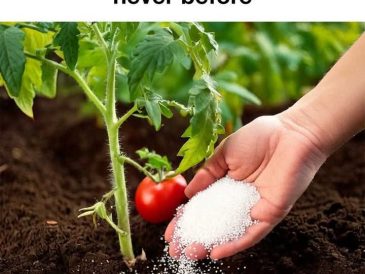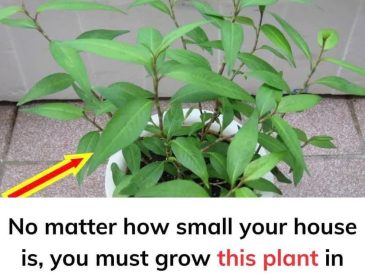Picture stepping outside into a yard that’s lush, soft, vibrant green, and buzzing gently with life. It’s cool beneath your bare feet, requires little watering, and stays green even through summer’s fiercest heat.
Best of all? You barely have to mow.
This isn’t a dream – it’s a clover lawn.
More homeowners than ever are discovering that clover, once dismissed as a pesky weed, is actually a fantastic alternative to conventional grass.
As water becomes scarce, chemical concerns grow, and sustainability takes center stage, the humble clover has emerged as a lawn hero.
The Trouble With Traditional Grass Lawns
For decades, homeowners have viewed a perfectly manicured lawn as the hallmark of suburban beauty. But the reality is that maintaining a grass lawn can be costly and resource-intensive.
Here’s why:
1. High Water Consumption
Grass lawns are notoriously thirsty. In the U.S., turfgrass covers over 40 million acres – an area larger than many states – and consumes billions of gallons of water annually. In dry regions, this can strain already limited water supplies.
2. Dependence on Chemicals
Grass lawns often rely on:
- Synthetic fertilizers
- Weed killers (herbicides)
- Pesticides
These chemicals can run off into rivers and lakes, harming aquatic life and contaminating drinking water.
3. Frequent Mowing
Grass grows quickly and needs constant mowing, which:
- Burns fossil fuels
- Emits greenhouse gases
- Contributes to air and noise pollution
4. Susceptibility to Pests and Disease
Grass lawns can be vulnerable to:
- Grubs and chinch bugs
- Fungal diseases
- Drought stress
Homeowners often battle these problems with more chemicals, creating a costly, unsustainable cycle.
5. Costly Maintenance
Maintaining a grass lawn involves expenses for:
- Water bills
- Fertilizers
- Pesticides
- Lawn services
- Equipment fuel and repairs
In short, grass lawns can become an expensive and environmentally unfriendly endeavor.
Clover: The Eco-Friendly Alternative
So why consider switching to clover?
Clover offers all the beauty of a green lawn but with a fraction of the work and cost – and it’s far better for the environment.
11 Benefits of Clover Lawns
Let’s take a deeper look at why clover deserves a place in your yard:
1. Natural Fertilizer
Clover is a nitrogen-fixer. Through a symbiotic relationship with bacteria in its root nodules, clover captures nitrogen from the air and converts it into a form plants can use.
Why this matters:
- Reduces the need for synthetic fertilizers
- Keeps grass greener if grown as a mix
- Enriches soil health
A pure clover lawn essentially fertilizes itself.
2. Less Watering
Clover requires significantly less water than turf grass once established. Its deeper roots can access moisture that grass cannot, making it highly drought-tolerant.
If you live in a region where water restrictions are common, a clover lawn helps conserve precious resources.
3. Minimal Mowing
Clover grows slowly and stays relatively short – around 4-8 inches tall for most varieties, and even shorter for microclover.
While occasional mowing can keep it neat and prevent flowering, it’s not necessary every week like grass.
4. Soft, Cushion-Like Feel
Clover feels wonderfully soft underfoot. Its small, rounded leaves create a dense, cushiony texture that’s pleasant for:
- Children playing
- Picnics
- Barefoot walks
Unlike grass blades, which can be stiff and sharp, clover’s surface is gentle and smooth.
5. Stays Green During Drought
Traditional turfgrass often browns and goes dormant during summer heat. Clover, however, remains lush and green – even during drought conditions – thanks to its water-efficient growth.
6. Tolerates Poor Soil
Grass struggles in compacted or nutrient-poor soils. Clover, on the other hand, thrives in places other plants find challenging.
- Tolerates clay and sandy soils
- Improves soil health over time
- Adds organic matter as it decomposes
7. Supports Pollinators
Clover flowers attract:
- Bees
- Butterflies
- Beneficial insects
Pollinators are crucial for ecosystems, and your clover lawn can provide much-needed nectar sources.
8. Resists Dog Urine Spots
Dog owners know that urine often leaves unsightly yellow spots on grass. Clover is far less sensitive and can maintain its green color despite occasional pet use.
9. Affordable to Seed
Clover seed costs less than many turfgrass seeds. Plus, you’ll save significantly on fertilizers, water, and chemical treatments.
10. Environmentally Sustainable
- Reduces chemical runoff
- Cuts water use
- Decreases greenhouse gas emissions from mowing
- Helps fight climate change by sequestering carbon in the soil
11. A Unique, Beautiful Look
Clover has a fresh, slightly glossy appearance. Its tiny, rounded leaves and delicate blooms give lawns a unique, lush aesthetic.
Types of Clover for Lawns
Different types of clover offer unique benefits:
White Clover (Trifolium repens)
- The traditional lawn clover
- Grows 4-8 inches tall
- Forms dense mats
- Has white, globe-like flowers
- Tolerates moderate foot traffic
Microclover
- A newer variety of white clover
- Leaves are ⅓ the size of regular white clover
- Blends seamlessly with grass
- Stays lower (2-4 inches tall)
- Minimal flowering if mowed regularly
Microclover is excellent for homeowners who want the look of a traditional lawn but with clover’s benefits.
Red Clover (Trifolium pratense)
- Taller (12-18 inches)
- Rosy-pink blooms
- More suited for meadows or pollinator gardens rather than lawns
How to Plant a Clover Lawn
Switching to a clover lawn can be simple. Here’s how to do it right:
Preparing Your Existing Lawn
If converting an existing lawn:
- Mow short: Cut grass to its lowest safe height.
- Rake thoroughly: Remove debris and thatch to expose soil.
- Aerate if needed: Helps seed penetrate soil.
- Rough up the surface: Lightly scratch the soil with a rake.
Seeding Clover
- Broadcast seed evenly over prepared soil.
- Gently rake to ensure good seed-to-soil contact.
- Water lightly but thoroughly.
Seeding Rates
- White clover: 1-2 oz per 1,000 sq. ft.
- Microclover: 1 lb per 1,000 sq. ft.
Check seed packets for specific recommendations.
Watering New Clover
- Keep soil consistently moist for 2-3 weeks.
- Once established, reduce watering frequency.
Mixed Lawns
Many homeowners choose to blend clover and grass seed for a hybrid lawn:
- Combine microclover with turfgrass.
- Helps grass stay green with less fertilizer.
- Provides a traditional look with sustainability benefits.
Ongoing Clover Lawn Care
Maintaining a clover lawn is refreshingly low-key:
- Mow occasionally to keep height in check.
- Water sparingly during prolonged droughts.
- Overseed thin spots in spring or fall.
Avoid herbicides, as they kill broadleaf plants – including clover.
Common Concerns About Clover Lawns
No solution is perfect. Here’s how to address common worries:
Bees and Clover Flowers
Clover blossoms attract bees. For many gardeners, this is a benefit, supporting pollinators. But if you have children, pets, or allergies:
- Mow frequently to prevent flowering.
- Choose microclover, which blooms minimally.
Clover Can Stain Clothes
Wet clover leaves may leave green stains on clothing. Consider laying blankets for picnics or playtime.
Winter Dormancy
In colder climates, clover may turn brown in winter. This is normal and won’t harm the lawn long-term.
Cost Comparison: Clover vs. Grass Lawns
Let’s look at the cost savings:
| Expense | Traditional Grass | Clover Lawn |
|---|---|---|
| Seed Cost | $5–$15 / 1,000 sq. ft. | $3–$10 / 1,000 sq. ft. |
| Water Usage | High | Low |
| Fertilizers | Regular use | Rarely needed |
| Herbicides | Often used | Not required |
| Mowing Frequency | Weekly | Monthly or less |
Over several years, a clover lawn can save hundreds – or thousands – of dollars in maintenance costs.
Environmental Benefits
Choosing clover helps:
- Conserve water
- Reduce chemical runoff
- Lower carbon emissions
- Support biodiversity
- Improve soil health
Your lawn becomes a positive force for the environment rather than a resource drain.
Is Clover Right for You?
Clover lawns are ideal if you:
- Want a low-maintenance lawn
- Care about sustainability
- Live in drought-prone regions
- Love supporting pollinators
- Prefer a soft, lush yard
However, if you need a lawn for heavy foot traffic or want a uniform grass appearance year-round, clover may not be the perfect fit.
Traditional grass lawns have dominated American landscaping for decades – but they’re often unsustainable and resource-intensive.
Clover offers a beautiful, eco-friendly, and practical alternative that requires less water, fewer chemicals, and minimal maintenance.
By choosing clover, you’re not just saving money and time. You’re helping the environment, supporting pollinators, and creating a healthier yard for your family.





